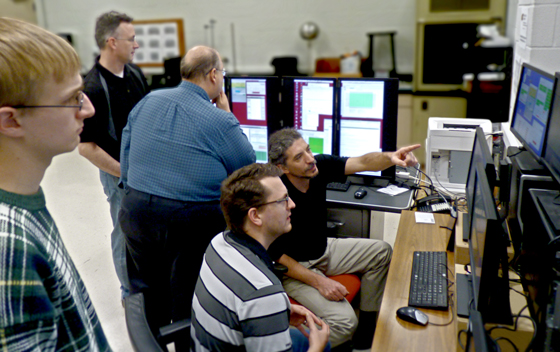Wichita State University has reinstated its master's degree in physics following approval last month by the Kansas Board of Regents.
The physics master's was suspended in 2003 by the Regents, citing low enrollment and graduation numbers in the major.

Ron Matson
Ron Matson, dean of the Fairmount College of Liberal Arts and Sciences – which encompasses physics – says the next step is to recruit students.
There are 40 undergraduate physics students at Wichita State this fall, but Matson thinks that number will increase now that undergraduates can be recruited to the master’s program.
The goal is 20 master’s students, and five graduates, a year. Five graduate teaching assistantships are available in the physics program, and prospective students can apply for admission into the physics master’s program
The official restart date is spring 2016, but applications are being accepted now.
Reviving the program
When the master’s degree was suspended 12 years ago, the Earth, Environmental and Physics Sciences (EEPS) program was created to house the graduate activities of physics, as well as geology and environmental science, and to help professors continue to seek research funding.
But a lot has changed since then, including the addition of faculty who specialize in multiple physics disciplines, a greater focus on research and the need for more educational opportunities in the STEM (science, technology, engineering and math) fields.
The revival of the master’s program will allow physicists to train students in those areas and better position the program for receiving external funding to support faculty and graduate student research, says Tom DeLillo, chairman of the Department of Mathematics, Statistics and Physics.
Physics training generally includes core courses in classical mechanics, quantum mechanics, electromagnetism and thermal and statistical physics, in addition to exposure to a range of mathematical, experimental and computational techniques.
“It is difficult to imagine a broader, more interdisciplinary course of study for anyone entering the STEM fields,” DeLillo says.
With the addition of the master’s program, DeLillo sees more opportunities for fruitful collaboration with other areas of science and engineering, including what he calls the most critical technical environmental problem: the production, distribution and conservation of clean energy.
“Physicists know all about energy,” he says.


 File
File